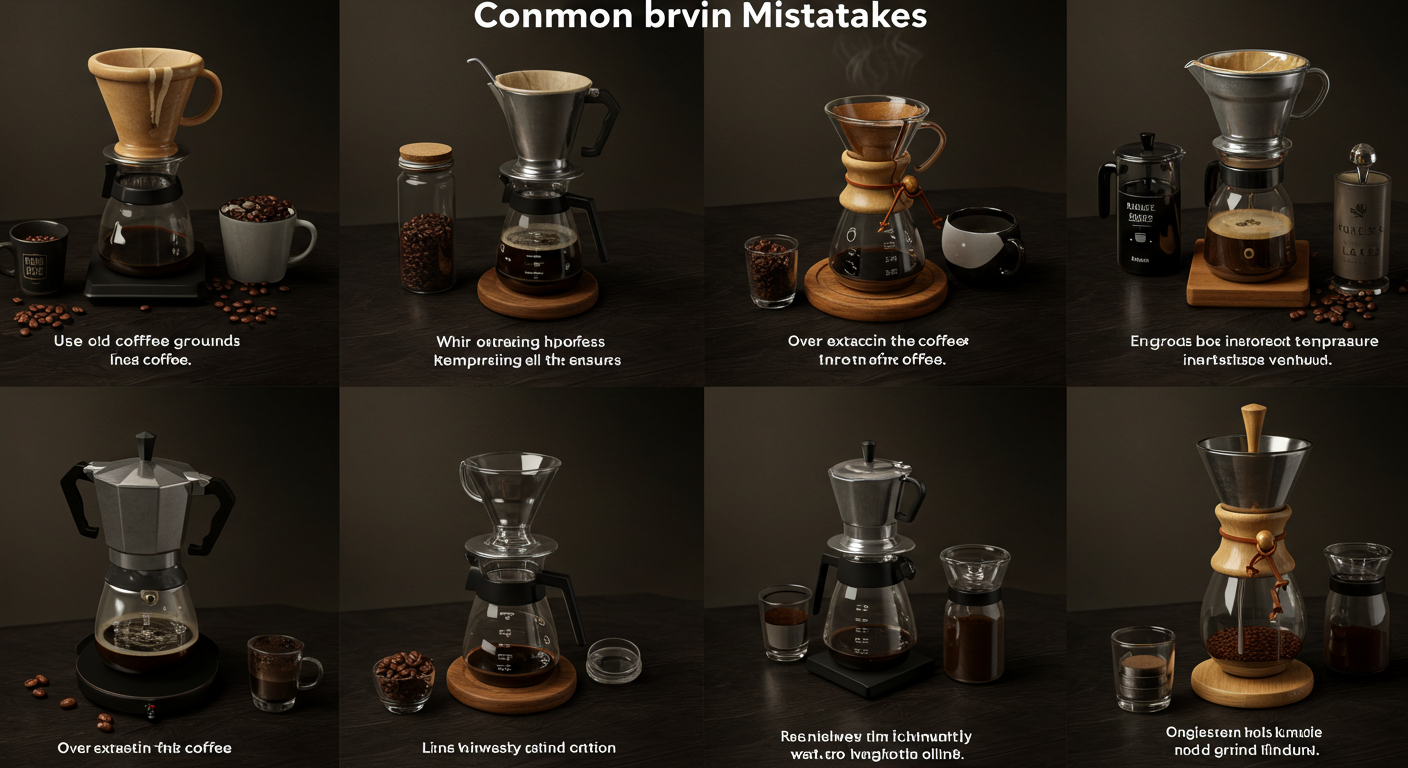Brewing coffee at home can be a satisfying daily ritual — but if your cup tastes bitter, sour, or just “off,” you might be making a few common mistakes. The good news? Most of these are easy to fix with a few simple adjustments.
Let’s explore the most frequent coffee brewing mistakes and how to avoid them, so you can enjoy café-quality coffee without ever leaving your kitchen.
1. Using Stale Coffee Beans
Mistake: Using beans that have been sitting in your pantry for weeks (or months).
Why it matters: Coffee loses its flavor quickly after roasting. Oxygen, moisture, light, and heat degrade the oils and aromatics that give coffee its complexity.
Fix:
- Buy freshly roasted beans from a local roaster or specialty store.
- Use them within 2–4 weeks of the roast date.
- Store beans in an airtight container in a cool, dark place (not the fridge!).
2. Grinding Too Early
Mistake: Grinding your coffee long before brewing.
Why it matters: Ground coffee loses its freshness much faster than whole beans. Within minutes, the volatile compounds begin to dissipate, and flavor degrades.
Fix:
- Invest in a burr grinder and grind your coffee right before brewing.
- Adjust the grind size depending on your brewing method.
3. Using the Wrong Grind Size
Mistake: One-size-fits-all grinding.
Why it matters: Each brewing method requires a specific grind size. If the grind is too fine or too coarse, it affects extraction, leading to bitter or weak coffee.
Fix:
- French press: Coarse grind
- Pour-over: Medium-fine
- Espresso: Fine grind
- Drip machine: Medium grind
- AeroPress: Medium-fine (depending on recipe)
4. Using the Wrong Water Temperature
Mistake: Brewing with boiling water or water that’s too cold.
Why it matters: Too-hot water over-extracts the coffee, making it bitter. Too-cold water under-extracts, making it sour and flat.
Fix:
- Use water between 92°C and 96°C (197°F–205°F).
- If you don’t have a thermometer, boil the water and let it sit for 30 seconds before pouring.
5. Ignoring Water Quality
Mistake: Using unfiltered tap water.
Why it matters: Water makes up 98–99% of your cup of coffee. If your water tastes bad, your coffee will too.
Fix:
- Use filtered or bottled water with a neutral taste.
- Avoid distilled water — it lacks the minerals that help extract flavor.
6. Incorrect Coffee-to-Water Ratio
Mistake: Guessing your measurements.
Why it matters: Too little coffee makes a watery brew; too much makes it overpowering and bitter.
Fix:
- Use a digital scale to weigh your coffee and water.
- Standard ratio: 1:15 to 1:17 (e.g., 15g of coffee for 225ml of water).
7. Rushing the Brew Time
Mistake: Cutting the brew short or letting it steep too long.
Why it matters: The amount of time coffee is in contact with water impacts flavor extraction.
Fix:
- French press: Brew for 4 minutes
- Pour-over: 2.5 to 3.5 minutes
- Espresso: 25–30 seconds
- Cold brew: 12–24 hours in the fridge
8. Not Pre-Wetting the Filter
Mistake: Skipping the filter rinse in pour-over or drip machines.
Why it matters: Paper filters can add a subtle papery taste to your brew.
Fix:
- Always rinse your filter with hot water before adding coffee.
- This also warms up your brewing equipment.
9. Letting Brewed Coffee Sit Too Long
Mistake: Leaving coffee in the pot or on the heat for too long.
Why it matters: Coffee continues to oxidize and break down after brewing, resulting in a bitter or burnt taste.
Fix:
- Drink your coffee fresh — ideally within 30 minutes.
- Transfer extra coffee to a thermal carafe if needed.
10. Neglecting Your Equipment
Mistake: Never cleaning your coffee maker or grinder.
Why it matters: Old oils and coffee residue can build up, affecting taste and even harboring mold.
Fix:
- Clean your coffee equipment at least once a week.
- Use a descaling solution or vinegar for machines, and brush out grinders regularly.
Brewing Better Starts With Awareness
Making great coffee at home isn’t just about good beans — it’s about avoiding these small but impactful mistakes. A few upgrades in your routine can completely transform the way your coffee tastes.
Once you nail down grind size, water quality, timing, and ratio, you’ll wonder how you ever settled for average coffee before. And the best part? You’re in full control.
Your perfect cup is just a few mindful tweaks away.


